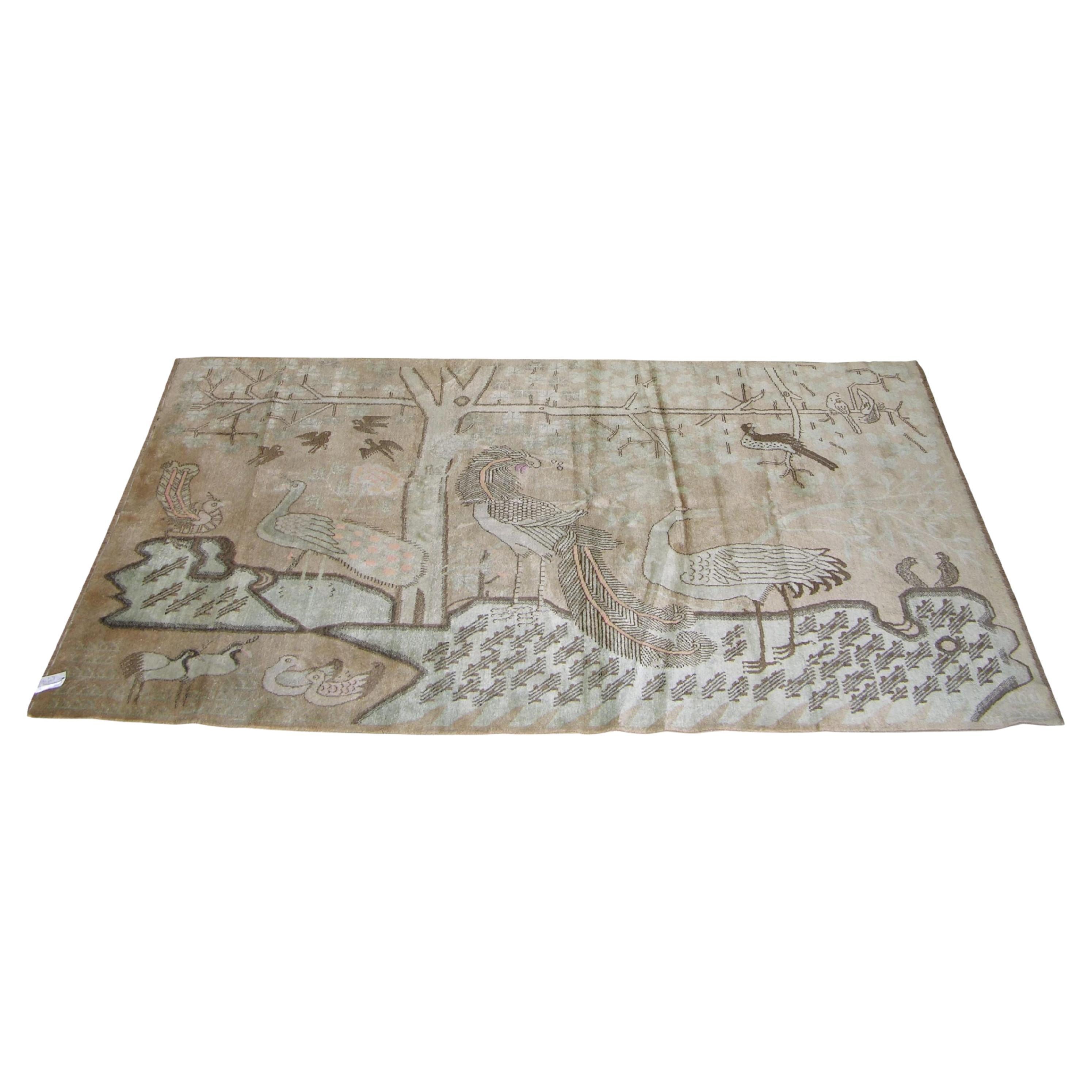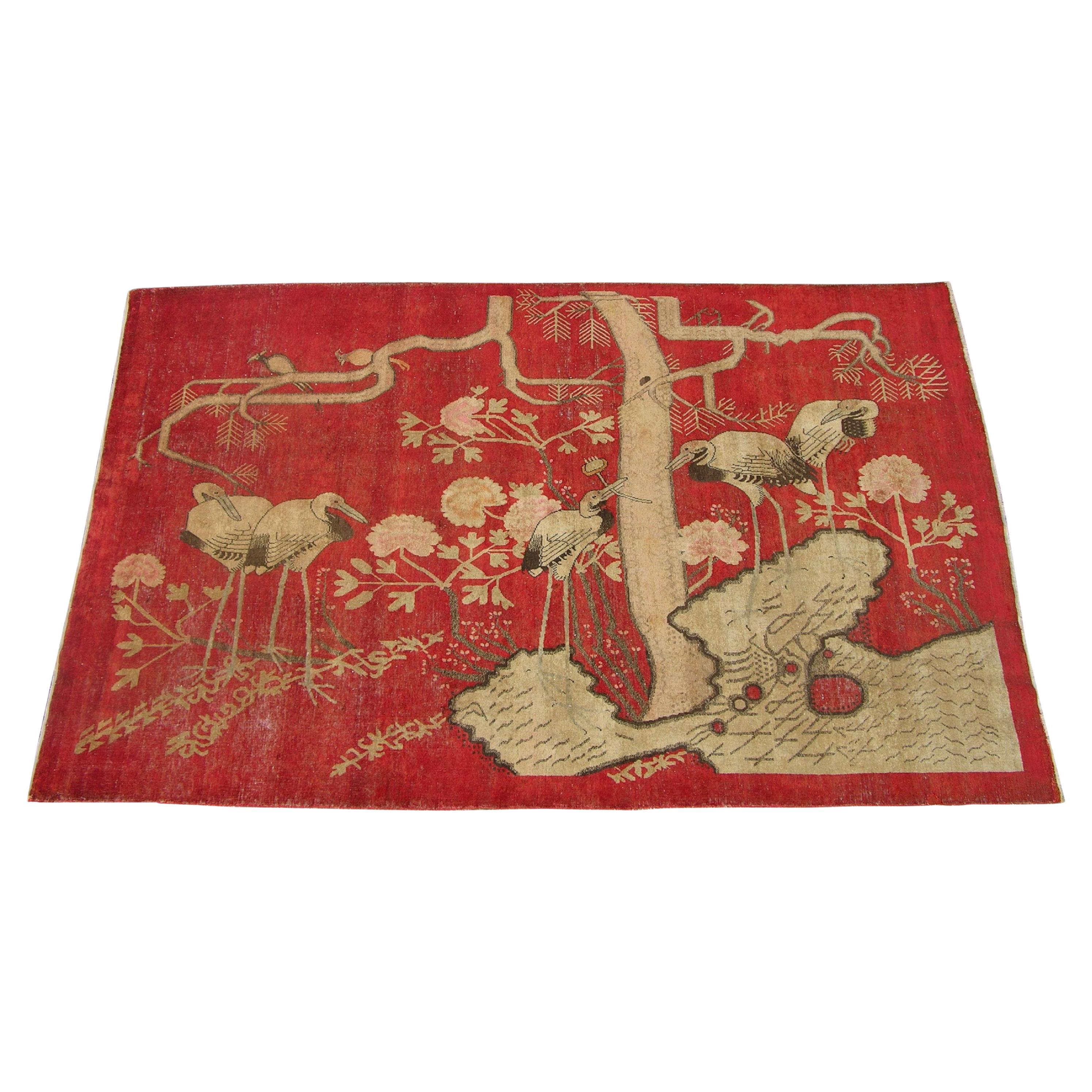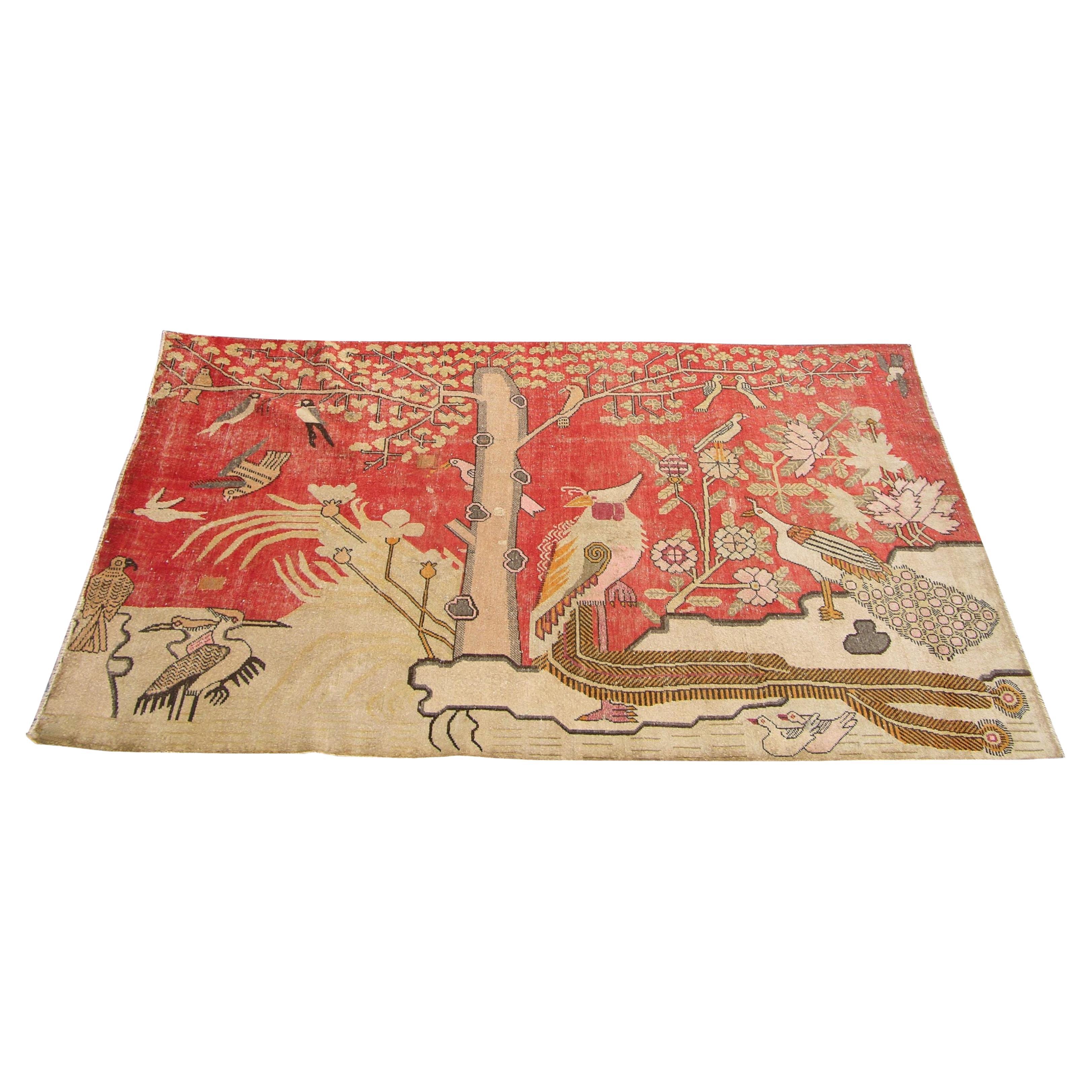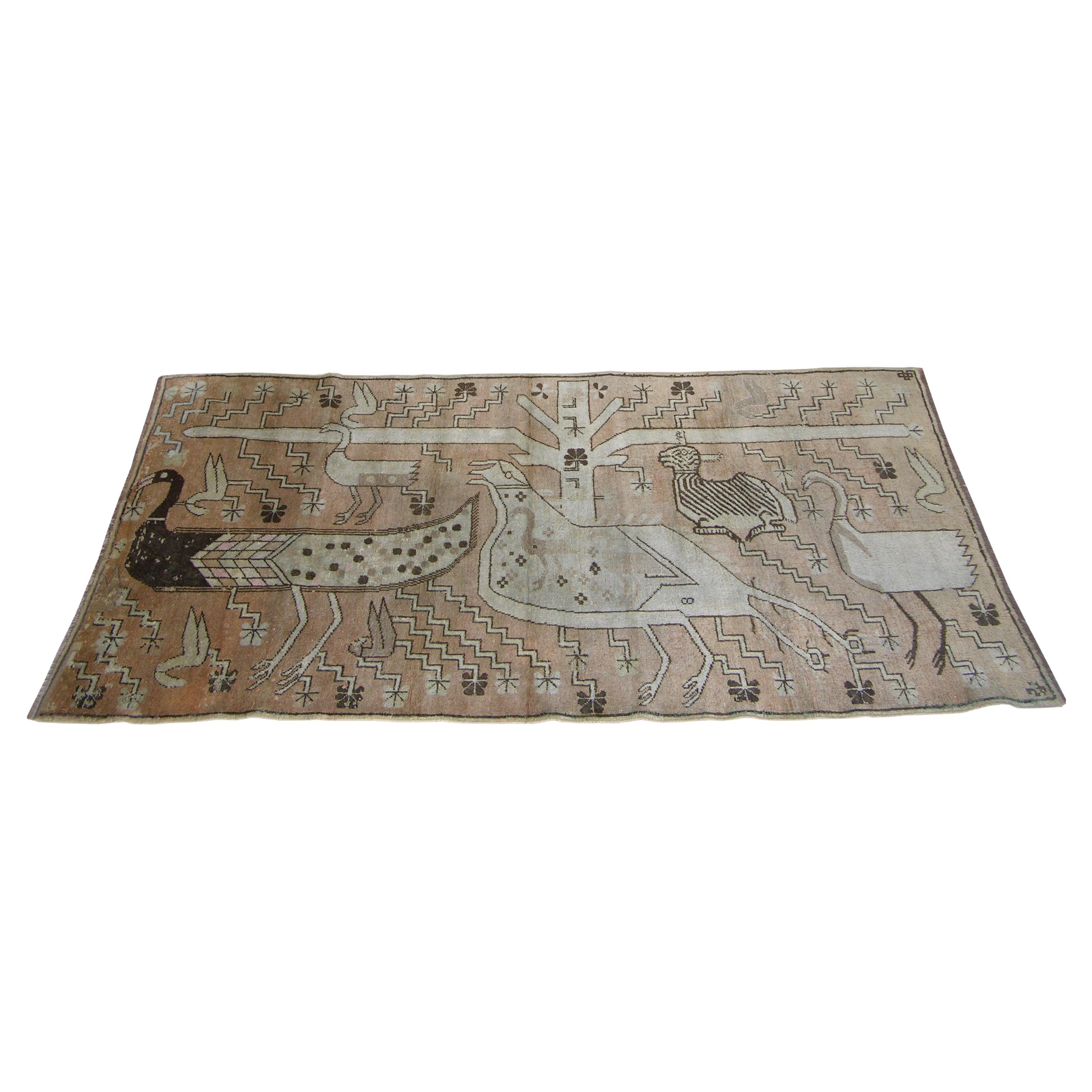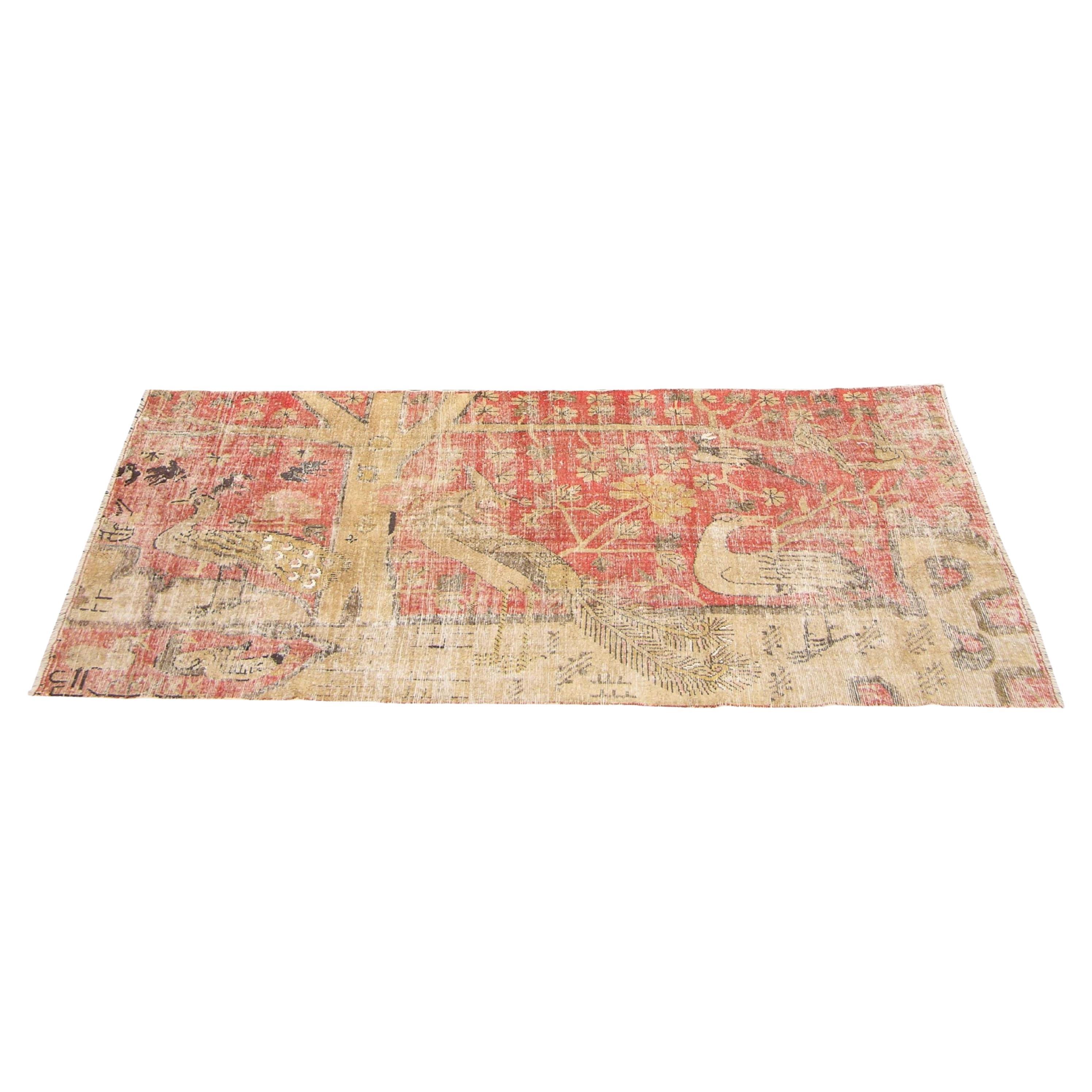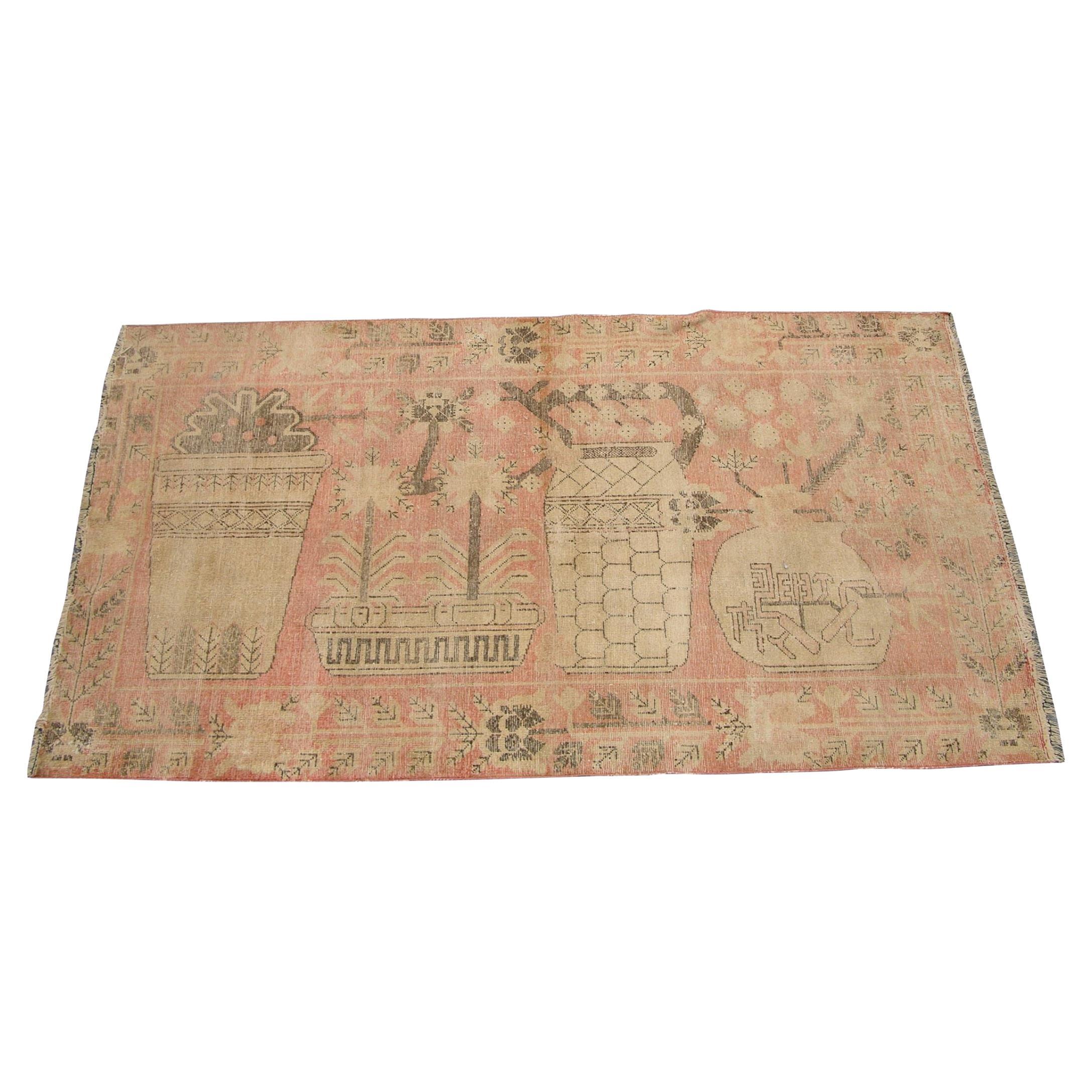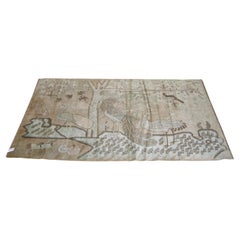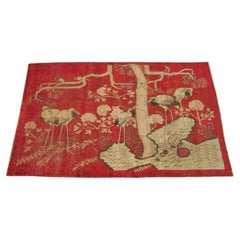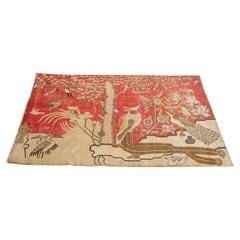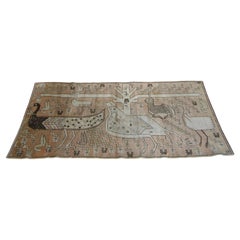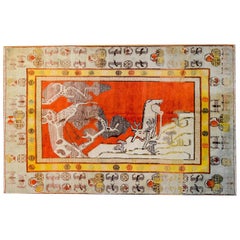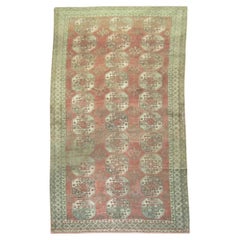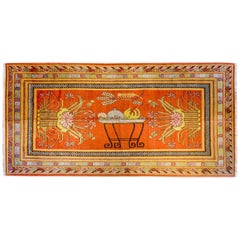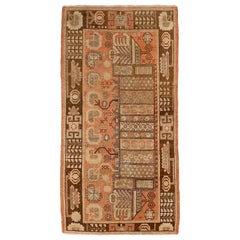Items Similar to 1900s Oriental Animal Print Khotan Samarkand Rug
Want more images or videos?
Request additional images or videos from the seller
1 of 5
1900s Oriental Animal Print Khotan Samarkand Rug
$8,850
£6,672.94
€7,689.63
CA$12,277.34
A$13,756.70
CHF 7,160.88
MX$168,292.02
NOK 90,894.17
SEK 85,848.46
DKK 57,404.68
Shipping
Retrieving quote...The 1stDibs Promise:
Authenticity Guarantee,
Money-Back Guarantee,
24-Hour Cancellation
About the Item
Antique Samarkand Rugs: The desert oasis of Khotan was an important stop on the Silk Road. The people of Khotan were expert carpet weavers who produced high quality antique rugs and carpets for both internal and the commercial trade. Samarkand carpets and reached the height of their popularity between the 17th Century and 19th century although archaeological evidence shows local people produced intricately woven textiles more than 1,000 years earlier.During the height of Samarkand carpet production, the city of was part of a region designated as Chinese controlled East Turkestan. Today, the city of Khotan or Hotan is located in modern-day China in the region of Xinjiang or the New Frontier. Through the centuries, the Khotan has been controlled by many dynasties and imperial powers that have influenced local carpet design.
Geographically, Khotan is the southern-most of East Turkestan’s three distinct carpet producing regions, which also include Yarkand and Kashgar. The city of Khotan is located on the northern edge of the Tibetan Plateau in fertile valleys between two important glacial rivers the Karakash River and the Yurungkash River, which are known for their deposits of black jade and white jade respectively.Despite the natural land barriers of the snow-covered Kunlun Mountain range and the harsh Taklamakan desert, Khotan was an important stop on the Silk Road for thousands of years.
Antique Samarkand rugs have been influenced by invading superpowers, travelers, and traders passing through. The Huns were one of the first groups to control Khotan and East Turkestan before the Chinese Buddhists gained power in the year 200.In the 8th Century, the Uyghurs, a group of Turkic-speaking Muslims, became the controlling power over most of East Asia from the Caspian Sea in the west to the Manchurian coast in the east.
Trade routes linking Khotan and the Kashmir region of Northern India were essential for transporting dye goods to carpet weavers in Khotan. At the time, Kashmiri dyers held a strong monopoly over the brilliant dyes produced by madder and indigo. Yellow, brown, and many natural or earth-tone colors were produced with locally available dye plants.
In urban carpet and rug studios, master weavers were responsible for purchasing materials and overseeing a team of trained workers. Carpet houses ranged from single rooms in a family home to entire buildings. The majority of Khotan rugs were made from wool pile knotted around a cotton warp.
The weft was typically made from wool, but cotton was also used. For each row of knotted pile, weavers generally added two or three shoots of weft, a trait commonly seen in carpets from Kazak regions.
Khotan rugs were traditionally produced using the asymmetric Persian carpet knot, which gives the pile the directional quality associated with carpets from the Far East. Although elements from Chinese and Tibetan rugs are evident in the medallion designs of Khotan, the colors, detailed patterns, execution, and production methods make them unlike carpets produced in the Far East.Designs used in antique Samarkand rugs were borrowed from Turkey, Anatolia, Iran, India, and many other countries. Eastern designs like one, two and three-medallion motifs were used frequently in Khotan carpet designs.
Rugs featuring repeating gul motifs, all-over arabesques, and branching pomegranate and vase motifs were also popular. Many other motifs like diamonds, flowers, and curving oval elements were borrowed from Mughal carpet weavers to the south.
By the beginning of the 20th Century, weavers in East Turkestan and Khotan switched to synthetic dyes and many of their traditional carpet making techniques were lost. Despite the decline of the Khotan’s rug / carpet weaving industry, rugs produced in this ancient melting pot continue to be prized for their versatile styling and rarity.'
- Dimensions:Width: 57 in (144.78 cm)Length: 100 in (254 cm)
- Style:Tribal (In the Style Of)
- Materials and Techniques:
- Period:
- Date of Manufacture:1900
- Condition:good condition.
- Seller Location:Los Angeles, US
- Reference Number:Seller: 5467y1stDibs: LU9020235679052
About the Seller
5.0
Platinum Seller
Premium sellers with a 4.7+ rating and 24-hour response times
Established in 1920
1stDibs seller since 2023
63 sales on 1stDibs
Typical response time: <1 hour
- ShippingRetrieving quote...Shipping from: Los Angeles, US
- Return Policy
Authenticity Guarantee
In the unlikely event there’s an issue with an item’s authenticity, contact us within 1 year for a full refund. DetailsMoney-Back Guarantee
If your item is not as described, is damaged in transit, or does not arrive, contact us within 7 days for a full refund. Details24-Hour Cancellation
You have a 24-hour grace period in which to reconsider your purchase, with no questions asked.Vetted Professional Sellers
Our world-class sellers must adhere to strict standards for service and quality, maintaining the integrity of our listings.Price-Match Guarantee
If you find that a seller listed the same item for a lower price elsewhere, we’ll match it.Trusted Global Delivery
Our best-in-class carrier network provides specialized shipping options worldwide, including custom delivery.More From This Seller
View AllAntique Samarkand Rug with Animal Print Design
Located in Los Angeles, US
Antique Samarkand Rugs: The desert oasis of Khotan was an important stop on the Silk Road. The people of Khotan were expert carpet weavers who produced high quality antique rugs and ...
Category
Antique Early 1900s Asian Other Russian and Scandinavian Rugs
Materials
Wool, Cotton
19th Century Animal Print Tribal Samarkand Rug
Located in Los Angeles, US
Antique Samarkand Rugs: The desert oasis of Khotan was an important stop on the Silk Road. The people of Khotan were expert carpet weavers who produced high quality antique rugs and ...
Category
Antique 19th Century Tribal Russian and Scandinavian Rugs
Materials
Wool, Cotton
Antique Handmade Samarkand Rug Ca.1900 - 8'7'' X 5'4''
Located in Los Angeles, US
Antique Samarkand Rugs: The desert oasis of Khotan was an important stop on the Silk Road. The people of Khotan were expert carpet weavers who produced high quality antique rugs and ...
Category
Antique Early 1900s Asian Tribal Russian and Scandinavian Rugs
Materials
Wool, Cotton
1900s Century Antique Samarkand Rug 8.8" X 4.10"
Located in Los Angeles, US
Add a touch of heritage to your space with this 19th-century Antique Samarkand Rug, measuring 8.8' x 4.10'. Its detailed design and rich hues resonate with American style, offering a...
Category
Antique 19th Century American Mid-Century Modern North and South America...
Materials
Wool, Cotton
1900s Antique Animal Samarkand Rug
Located in Los Angeles, US
Antique Samarkand Rugs: The desert oasis of Khotan was an important stop on the Silk Road. The people of Khotan were expert carpet weavers who produced high quality antique rugs and ...
Category
Antique Early 1900s Asian Tribal Russian and Scandinavian Rugs
Materials
Wool, Cotton
19th Century Khotan Samarkand Rug
Located in Los Angeles, US
The desert oasis of Khotan was an important stop on the Silk Road. The people of Khotan were expert carpet weavers who produced high quality antique rugs and carpets for both interna...
Category
Antique Early 1900s Empire Russian and Scandinavian Rugs
Materials
Wool, Cotton
You May Also Like
Gorgeous Early 20th Century Pictorial Khotan Rug
Located in Chicago, IL
A gorgeous early 20th century Central Asian pictorial Khotan rug depicting a deer on a mountain with a crane perched in a twisted pine tree against a brilliant orange sky. The border...
Category
Vintage 1920s Central Asian Khotan Central Asian Rugs
Materials
Wool
Large Antique Tribal Ersari Rug
Located in New York, NY
A highly decorative afghan Ersari large-size rug with a tribal all-over design from the 1st quarter of the 20th Century
Measures: 7'7'' x 14'4''.
Category
Early 20th Century Tribal Central Asian Rugs
Materials
Wool
Incredible Early 20th Century Khotan Rug
Located in Chicago, IL
An incredible early 20th century Central Asian Khotan rug with wonderfully rendered auspicious Chinese symbols like a footed tray holding a peach, pomegranate, and citron, flanked by...
Category
Vintage 1930s East Turkestani Khotan Central Asian Rugs
Materials
Wool
Antique Russian Area Rug Khotan Design
Located in Dallas, TX
Antique Russian area rug handwoven from the finest sheep’s wool. It’s colored with all-natural vegetable dyes that are safe for humans and pets. It’s a traditional Khotan design hand...
Category
20th Century Russian Khotan Russian and Scandinavian Rugs
Materials
Wool
$1,520 Sale Price
20% Off
Early 20th Century Central Asian Khotan Carpet
Located in Chicago, IL
An early 20th century Central Asian Khotan carpet with fruit s and flowers on a red background surrounded by a mint green floral border.
Measures: 8.9" x 5.8".
Keywords: Rug,...
Category
Vintage 1930s Turkestan Central Asian Rugs
Materials
Wool
Early 20th Century Samarkand Rug
Located in Chicago, IL
An early 20th century Central Asian pictorial Samarkand carpet depicting several vases planted with flowering plants and fruits.
Measures: 6'10" x 13'4''.
Keywords: Rug, carpet...
Category
Vintage 1930s Central Asian Rugs
Materials
Wool
More Ways To Browse
Imperial Russian Antiques
Jade Mountain
Russian Jade
Jade Plant
Ancient Chinese Jade
Antique Imperial Jade
Jade Pot
Mughal Print
Solid Wood Side Table Stool
1959 Wood Couch
Dutch Mid Century Chair
Rare Stone Table
Used Chair And A Half
Wood Folding Chair
Antique Green Side Table
Antique Red Velvet
Antique Wall Bracket
Midcentury Rosewood Dining Table
